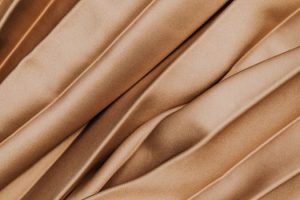Fabric Choices for Surviving Long Workdays
Do you find yourself constantly feeling uncomfortable or irritated during long workdays? Your choice of clothing could be a major factor. The fabric you wear can greatly impact your comfort level and productivity at work. With the average American working 8 hours a day, 5 days a week, it is essential to choose the right fabrics to survive those long workdays. In this article, we will explore the best fabric choices for surviving long workdays and how they can benefit you.
The Importance of Comfortable Clothing for Long Workdays
Comfortable clothing is crucial for maintaining productivity and focus during long workdays. Sitting or standing for extended periods can lead to aches, pains, and even health issues if not addressed properly. Poor fabric choices can contribute to these problems, making it difficult to stay focused and motivated. On the other hand, the right fabrics can enhance your comfort, reduce distractions, and allow you to perform your best at work.
Fabric Choices for Surviving Long Workdays
Cotton
Cotton is a widely popular fabric due to its versatility and comfort. It is lightweight, breathable, and absorbs moisture, making it an ideal choice for long workdays. Cotton clothing allows air to circulate, keeping your body cool and dry, which is especially important during hot summer months. It is also hypoallergenic, making it suitable for those with sensitive skin. The downside to cotton is that it wrinkles easily, so it may not be the best choice for more formal work environments.
Polyester
Polyester is a synthetic fabric that is known for its durability and wrinkle-resistant properties. It is also lightweight, making it a popular choice for workwear. Polyester is moisture-wicking, so it will keep you cool and dry during long workdays, and it dries quickly if it gets wet. The downside is that it is not as breathable as cotton, which can make it uncomfortable during hot weather. It can also cause static and cling to the body, which can be distracting.
Wool
Wool is a natural fabric that is known for its warmth, making it an excellent choice for cooler work environments. It is also moisture-wicking and lightweight, keeping you comfortable and dry throughout the day. Wool is also resistant to wrinkles and odors, making it a great choice for those who want to look professional without putting in too much effort. The only downside to wool is that it can be itchy for some people, so it is important to choose a high-quality wool blend that is soft and comfortable.
Denim
Denim is a durable and versatile fabric that has become increasingly popular in the workplace. It is known for its durability and can withstand repetitive movements and long hours. Like cotton, denim is breathable and absorbs moisture, making it comfortable for long workdays. It also comes in a variety of styles and colors, making it suitable for a range of work environments. However, denim can be heavy and may not be the best choice for hot weather or long periods of sitting.
Spandex
Spandex, also known as Lycra, is a synthetic fabric that is known for its stretchability and comfort. It is often blended with other fabrics to add stretch, making it a popular choice for workwear. Spandex moves with your body, allowing you to be more flexible and comfortable during long workdays. It is also moisture-wicking and dries quickly, making it ideal for those in physically demanding jobs. The only downside is that it may not be suitable for more formal work environments.
Tips for Choosing the Right Fabric
When shopping for work clothing, here are a few tips to keep in mind to ensure you choose the right fabric for surviving long workdays:
Consider the weather and work environment
Choose fabrics that are appropriate for the weather and your work environment. For hot weather, opt for lightweight, breathable fabrics like cotton or spandex. For cooler environments, choose heavier fabrics like wool or denim.
Look for moisture-wicking properties
For physically demanding jobs or in hot weather, look for fabrics that are moisture-wicking. These fabrics will keep you cool and dry throughout the day, minimizing discomfort and distractions.
Consider your activities
If your job requires repetitive movements or sitting for long periods, choose fabrics that are durable and stretchable, such as denim or spandex. These fabrics will allow you to move freely and comfortably.
Invest in quality fabrics
High-quality fabrics may be more expensive upfront, but they are worth the investment in the long run. They will last longer, retain their shape, and provide better comfort compared to cheaper, lower-quality fabrics.
In Conclusion
Choosing the right fabric for your workwear is essential for surviving long workdays. It can greatly impact your comfort, productivity, and overall well-being at work. Consider your job requirements, weather, and personal preferences when selecting fabrics, and always opt for higher quality materials for the best results. By making the right fabric choices, you can stay comfortable and focused to conquer those long workdays with ease.






